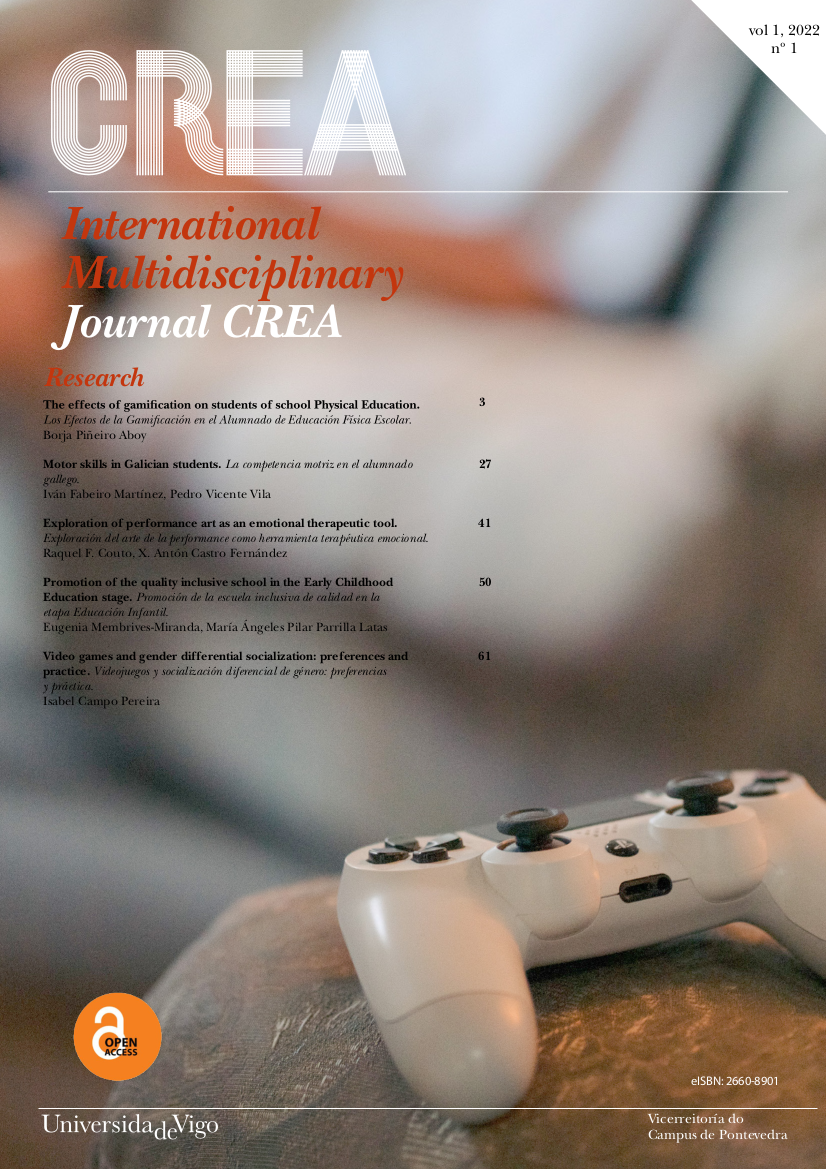Video games and gender differential socialization: preferences and practice
DOI:
https://doi.org/10.35869/ijmc.v2i1.3895Keywords:
socialisation, gender, esterotypes, primary education, video gameAbstract
The present investigation issue from the intention to analyse whether there is a relationship between the influence of differential gender socialisation and differential patterns of choice in the 11-12 age group in relation to video games. For this reason, a questionnaire was administered to pupils in the last year of Primary Education at the CEIP Frián de Teis school in Vigo (n=47). In addition, we analysed the usual video games played by pupils, according to the subject matter and the gender stereotypes and roles they may transmit, classifying them into more and less stereotypical video games. The analysis of the results reveals that there are important differences that can be derived from a relationship between differential socialisation by gender and the guidelines that these pupils currently have with regard to the game chosen, with whom they play it or the time they spend playing it. The data collected in the study allow us to draw some conclusions and to formulate the need of families and teachers to be informed about the persistence of sexist models in video games and to jointly advocate the path of coeducation.
Downloads
Downloads
Published
How to Cite
Issue
Section
License

This work is licensed under a Creative Commons Attribution-NonCommercial-NoDerivatives 4.0 International License.
Copyright
After the acceptance of an article, the authors will be asked to complete a Publication Agreement. Acceptance of the agreement will guarantee the widest possible dissemination of information. Under this agreement, the copyright will be transferred to the Company / Institution if the manuscript is accepted for publication. Permission from the Company / Institution is required for resale or distribution outside the institution and for all other derivative works, including compilations and translations. If extracts from other copyrighted works are included, the author (s) must obtain written permission from the owners of the copyright and credit rights of the source (s) in the article.
Rights of users
All the articles published in the magazine will be immediately and permanently accessible so that any user can read and download them. The (Re) use allowed for third parties of the published content will be defined by the following Creative Commons license: Creative Commons Attribution-Noncommercial-No Derivative Works (CC BY-NC-ND). For non-commercial purposes, allow others to distribute and copy the article. It also allows its inclusion in a collective work (such as an anthology), provided that the author (s) is cited and the article is not altered or modified.
Publication cost
The author of the accepted articles should not pay for its publication. The Society or the Institution that owns the journal finances the production costs of the manuscripts.








